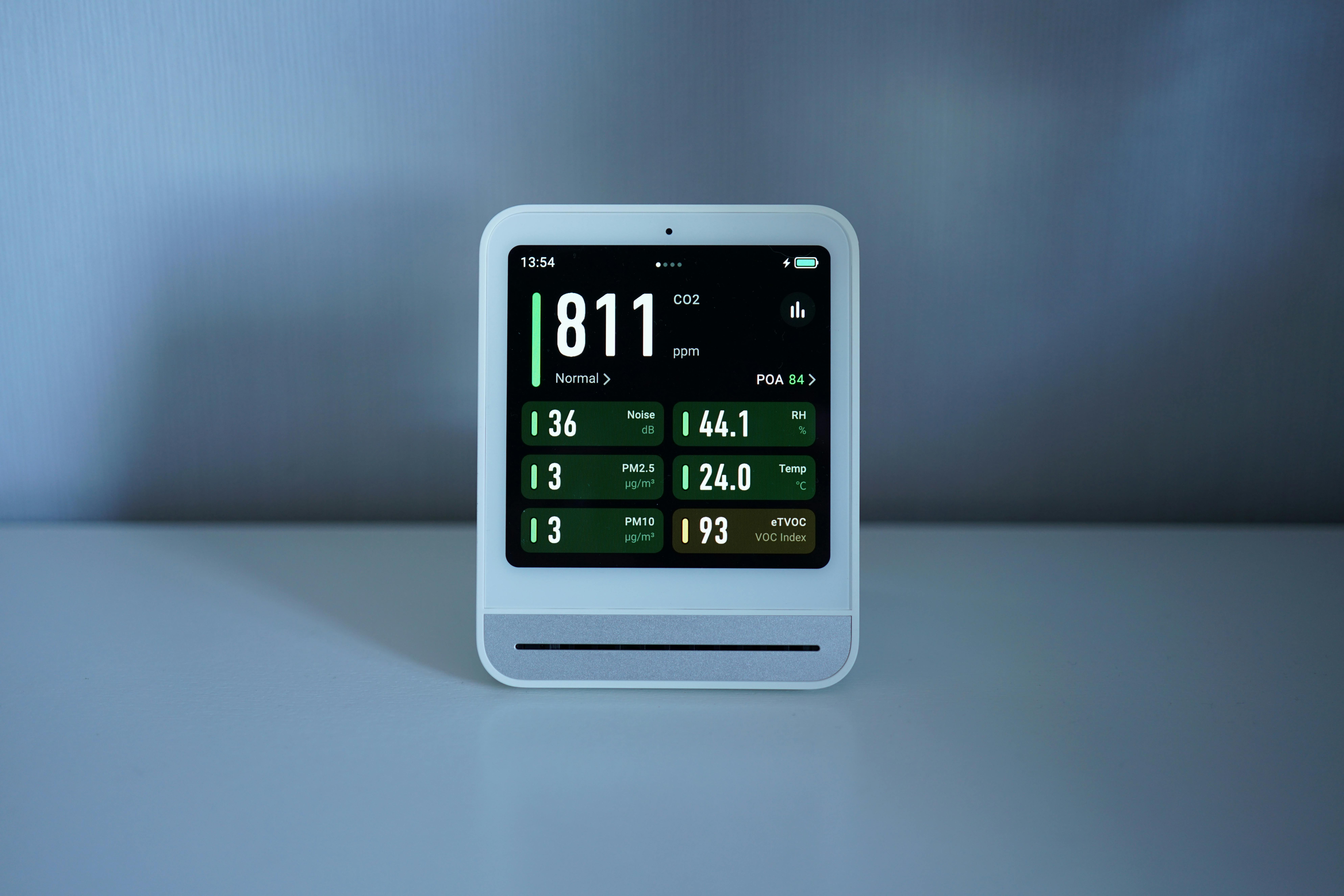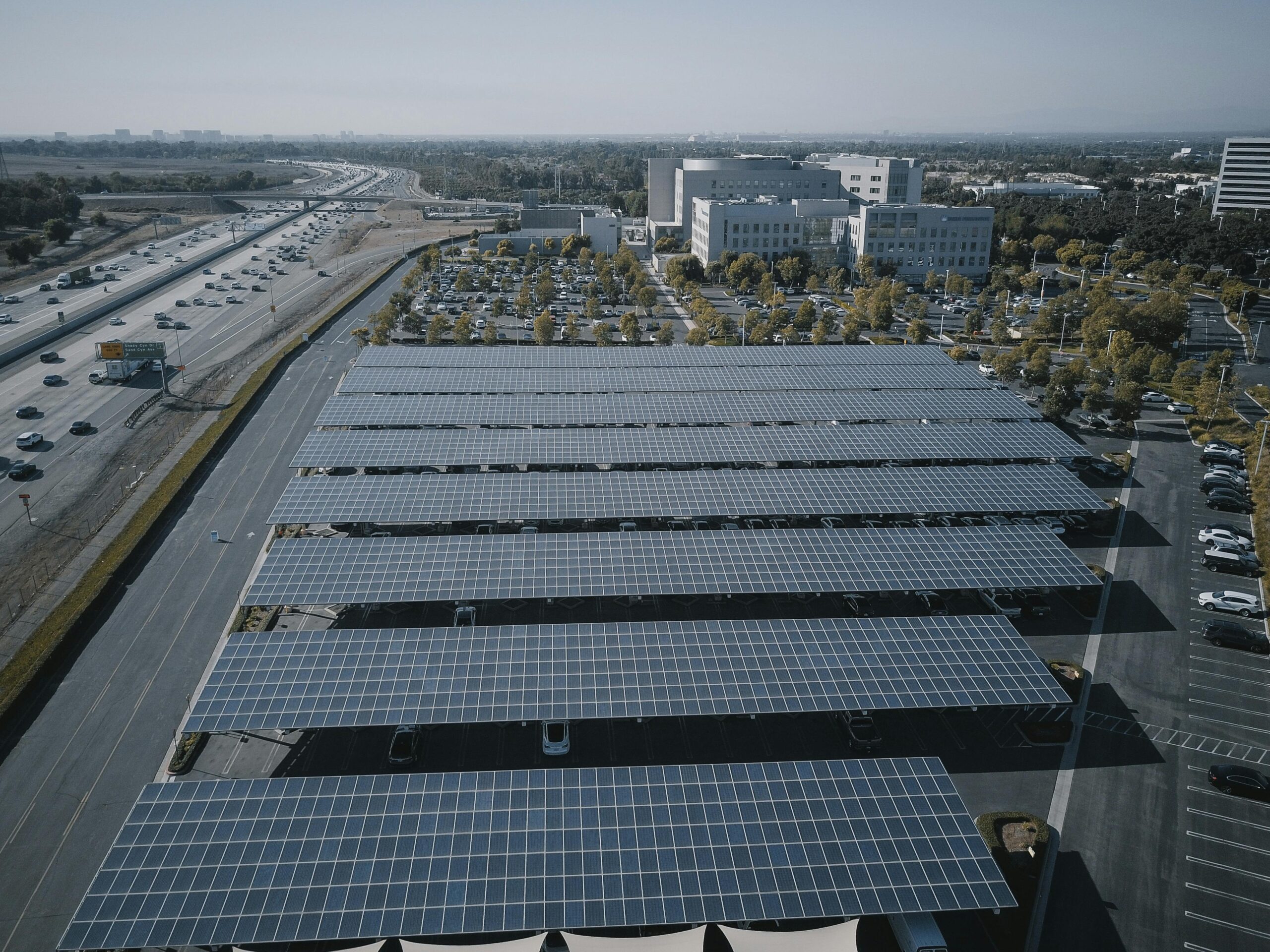Air quality directly impacts our health, yet many of us remain unaware of what we’re breathing daily. Real-time monitoring technology now empowers us to make informed decisions about our environment.
🌍 Why Air Quality Matters More Than Ever
The air surrounding us contains invisible particles and gases that significantly affect our respiratory system, cardiovascular health, and overall well-being. According to the World Health Organization, air pollution contributes to millions of premature deaths annually worldwide. What makes this challenge particularly concerning is that pollution levels fluctuate throughout the day, varying by location, weather conditions, and human activities.
Traditional methods of monitoring air quality relied on sparse governmental stations that provided delayed information covering broad geographic areas. This approach left significant gaps in our understanding of localized pollution hotspots and real-time exposure risks. The emergence of real-time air quality monitoring has revolutionized how we interact with our environment, providing instant feedback that enables immediate protective actions.
Modern air quality sensors detect various pollutants including particulate matter (PM2.5 and PM10), nitrogen dioxide, ozone, carbon monoxide, and sulfur dioxide. Each of these contaminants poses unique health risks, particularly for vulnerable populations such as children, elderly individuals, and those with pre-existing respiratory conditions.
📊 Understanding the Air Quality Index
The Air Quality Index (AQI) serves as the standard communication tool that translates complex pollution data into actionable information. This numerical scale typically ranges from 0 to 500, with higher values indicating greater health concerns. Understanding this index empowers individuals to make informed decisions about outdoor activities and protective measures.
The AQI categorizes air quality into six levels, each coded with distinct colors for easy recognition:
- Good (0-50): Air quality poses little to no risk, ideal for all outdoor activities
- Moderate (51-100): Acceptable quality, though sensitive individuals should consider limitations
- Unhealthy for Sensitive Groups (101-150): Children, elderly, and those with respiratory conditions should reduce prolonged exposure
- Unhealthy (151-200): Everyone may experience health effects, sensitive groups face more serious impacts
- Very Unhealthy (201-300): Health alert conditions triggering widespread effects
- Hazardous (301-500): Emergency conditions affecting the entire population
Real-time monitoring systems continuously update AQI readings, allowing users to track hourly changes and forecast pollution trends. This temporal granularity proves invaluable for planning activities, whether scheduling morning runs, organizing children’s outdoor playtime, or determining optimal ventilation times for indoor spaces.
💨 The Technology Behind Real-Time Monitoring
Modern air quality monitoring relies on sophisticated sensor networks combining traditional reference-grade equipment with innovative low-cost sensors. High-precision monitoring stations operated by environmental agencies use advanced analytical instruments that provide highly accurate measurements, serving as calibration benchmarks for wider networks.
The proliferation of affordable sensors has democratized air quality monitoring, enabling dense networks that capture hyperlocal variations. These compact devices employ laser scattering technology for particulate matter detection and electrochemical sensors for gaseous pollutants. While individual low-cost sensors may have higher uncertainty margins, their collective data, when properly calibrated and aggregated, generates comprehensive pollution maps.
Internet of Things (IoT) connectivity enables these sensors to transmit data instantly to centralized platforms. Cloud-based analytics process this information stream, applying algorithms that filter noise, validate readings, and generate real-time visualizations. Machine learning models increasingly enhance these systems, predicting pollution patterns based on traffic data, meteorological conditions, and historical trends.
📱 Mobile Applications Transforming Air Quality Awareness
Smartphone applications have become primary interfaces through which millions access air quality information. These platforms aggregate data from governmental stations, private sensor networks, and citizen science initiatives, presenting comprehensive coverage through intuitive interfaces.
Leading air quality apps provide features beyond basic AQI reporting. Push notifications alert users when pollution levels exceed healthy thresholds, personalized health recommendations guide protective actions, and historical tracking enables users to identify patterns affecting their specific locations. Many applications incorporate forecasting capabilities, predicting air quality hours or days ahead to facilitate proactive planning.
One highly-rated application for tracking air quality is IQAir AirVisual, which provides real-time pollution data from thousands of monitoring stations worldwide.
Another excellent option is Plume Labs Air Quality, which offers hyperlocal forecasts and personalized health recommendations based on your activity level and sensitivity.
These applications demonstrate how technology bridges the gap between complex environmental data and everyday decision-making, empowering users to protect their health through informed choices.
🏠 Indoor Air Quality: The Overlooked Environment
While outdoor air pollution receives significant attention, indoor air quality often presents greater health implications since most people spend approximately 90% of their time indoors. Indoor environments concentrate pollutants from various sources including cooking emissions, cleaning products, building materials, furniture off-gassing, and inadequate ventilation systems.
Real-time indoor air quality monitors have gained popularity as awareness grows regarding this hidden health threat. These devices typically measure particulate matter, volatile organic compounds (VOCs), carbon dioxide levels, humidity, and temperature. Carbon dioxide concentration serves as a proxy for ventilation effectiveness, with elevated levels indicating insufficient fresh air exchange.
Smart home integration allows indoor monitors to trigger automated responses. When pollutant levels rise, connected systems can activate air purifiers, adjust HVAC settings, or send alerts prompting manual ventilation. This automated approach ensures continuous protection without requiring constant attention.
The relationship between indoor and outdoor air quality creates complex dynamics. Opening windows for ventilation improves indoor freshness but may introduce outdoor pollutants during high-pollution periods. Real-time monitoring of both environments enables optimal strategies, such as ventilating during early morning hours when outdoor pollution typically reaches daily lows.
🏙️ Urban Planning and Environmental Justice
Real-time air quality data increasingly influences urban planning decisions and environmental policy. Dense sensor networks reveal pollution disparities often correlating with socioeconomic factors, highlighting environmental justice concerns. Low-income neighborhoods frequently experience disproportionately high pollution exposure due to proximity to highways, industrial facilities, and limited green space.
Municipal governments leverage real-time monitoring to implement targeted interventions. Traffic management systems adjust signal timing or implement temporary restrictions during high-pollution episodes. Green infrastructure investments prioritize areas with identified air quality deficits. Public awareness campaigns activate when conditions warrant protective measures.
The transparency provided by publicly accessible monitoring data empowers communities to advocate for environmental improvements. Citizen science initiatives, where residents deploy personal monitors, supplement official networks and generate hyperlocal insights that might otherwise remain invisible. This grassroots data collection has catalyzed policy changes and corporate accountability in numerous jurisdictions.
🌱 Taking Action: Personal Strategies for Healthier Breathing
Access to real-time air quality information proves most valuable when translated into protective actions. Individual strategies vary based on personal health status, activity patterns, and environmental exposure, but several universal principles enhance respiratory health.
Timing outdoor activities around pollution patterns minimizes exposure. Urban areas typically experience traffic-related pollution peaks during morning and evening commute hours, while ozone levels often peak during hot, sunny afternoons. Early morning or late evening exercise sessions frequently offer cleaner air windows. Monitoring apps can identify optimal activity times specific to your location.
Route selection significantly impacts exposure levels. Walking or cycling on side streets rather than major thoroughfares can reduce pollutant inhalation by 30-50%. Green corridors with trees and vegetation provide additional benefits, as plants filter certain pollutants and create microclimate benefits. Some navigation apps now incorporate air quality data into route recommendations.
Indoor protection strategies include maintaining air purifiers with HEPA filtration, particularly in sleeping areas where extended exposure occurs. Regular filter maintenance ensures optimal performance. Ventilation timing based on real-time outdoor monitoring optimizes fresh air intake while minimizing pollutant introduction. Creating positive pressure through filtered intake can prevent unfiltered outdoor air infiltration.
🔬 Health Implications: What Science Tells Us
Extensive research documents the health consequences of air pollution exposure, revealing impacts far beyond respiratory systems. Short-term exposure to elevated particulate matter increases cardiovascular events, triggers asthma attacks, and reduces lung function. Long-term exposure contributes to chronic obstructive pulmonary disease, lung cancer, and cardiovascular disease development.
Emerging research identifies concerning effects on cognitive function and mental health. Studies associate pollution exposure with increased dementia risk, reduced cognitive performance in children, and elevated depression rates. Inflammation triggered by inhaled particles appears to affect neurological systems through multiple pathways.
Vulnerable populations face disproportionate risks. Children’s developing respiratory systems and higher breathing rates per body weight increase their exposure and sensitivity. Pregnant women exposed to air pollution face elevated risks of preterm birth and low birth weight. Individuals with existing cardiovascular or respiratory conditions experience symptom exacerbation during pollution episodes.
Real-time monitoring enables epidemiological research with unprecedented temporal and spatial resolution. Researchers can now correlate specific pollution exposure windows with health outcomes, identifying critical periods and exposure thresholds. This evidence base strengthens regulatory justification and informs protective guidelines.
🌐 Global Perspectives and Future Innovations
Air quality monitoring infrastructure varies dramatically across global regions. Developed nations typically maintain extensive governmental networks supplemented by private initiatives, while developing countries often face significant monitoring gaps despite experiencing severe pollution challenges. International organizations work to expand monitoring capacity where needs are greatest.
Satellite-based monitoring represents a frontier technology providing global coverage including remote areas lacking ground-based infrastructure. Advanced satellites measure atmospheric composition with increasing resolution, though ground-level concentrations require sophisticated modeling to estimate from space-based observations. The integration of satellite data with ground networks creates comprehensive monitoring systems.
Artificial intelligence applications are transforming air quality forecasting accuracy. Machine learning models trained on years of monitoring data identify complex patterns invisible to traditional statistical approaches. These systems incorporate diverse inputs including weather forecasts, traffic patterns, industrial activity schedules, and seasonal vegetation changes to predict pollution evolution.
Personal exposure monitoring continues miniaturizing, with wearable sensors entering the market. These devices measure actual individual exposure accounting for personal mobility patterns and microenvironments encountered throughout the day. This personalized data provides insights impossible to obtain from fixed monitoring stations, though privacy considerations require careful attention.
💡 Building a Culture of Air Quality Awareness
Technology alone cannot solve air quality challenges; cultural shifts toward awareness and accountability are equally essential. Education initiatives help communities understand pollution sources, health implications, and protective strategies. Schools incorporating air quality monitoring into science curricula empower the next generation with environmental literacy.
Corporate responsibility increasingly extends to air quality impacts. Companies monitor emissions, optimize operations to minimize pollution, and report environmental performance transparently. Consumer pressure amplified by readily accessible pollution data incentivizes cleaner practices and technological innovations.
Individual choices collectively shape air quality outcomes. Transportation mode selection, energy consumption patterns, and consumer preferences influence pollution generation. Real-time feedback creates awareness connecting personal actions to environmental consequences, potentially motivating behavior changes that aggregate into significant impacts.
Community engagement around air quality data fosters collective action more effectively than abstract statistics. Neighborhood monitoring projects create shared understanding and motivation for improvements. Local success stories demonstrate achievable progress, inspiring replication and scaling of effective interventions.

🚀 Empowering Change Through Information
The revolution in real-time air quality monitoring fundamentally alters our relationship with the atmosphere we inhabit. What was once invisible and ignored now becomes visible and actionable. This transformation empowers individuals to protect their health, enables communities to advocate for environmental justice, and provides policymakers with evidence supporting effective interventions.
The path toward healthier air requires sustained commitment across scales from personal choices to international cooperation. Monitoring technology provides the essential foundation of awareness, but realizing its potential demands engagement. Checking air quality should become as routine as checking weather forecasts, integrating environmental conditions into daily decision-making.
As sensor networks densify, algorithms improve, and awareness spreads, we approach a future where unhealthy air quality becomes increasingly unacceptable and avoidable. The tools exist today to breathe easier tomorrow. The question is not whether we can monitor air quality effectively, but whether we will act upon the knowledge these systems provide.
Every breath matters, and now we finally have the technology to ensure each one contributes to health rather than detracts from it. Real-time air quality monitoring represents more than technological achievement; it embodies a fundamental right to know what we breathe and the power to demand better. The future of environmental health depends on embracing this information revolution and translating data into decisive action for cleaner, healthier air for all.
Toni Santos is an urban innovation writer and researcher dedicated to exploring how technology, sustainability, and design are reshaping the cities of tomorrow. With a deep interest in smart infrastructure and human-centered development, Toni studies how data-driven systems and green technologies can create more livable, resilient, and efficient urban environments. Fascinated by sustainable architecture, IoT integration, and next-generation mobility, Toni’s work connects environmental awareness with digital transformation. Through research and storytelling, he examines how intelligent planning and renewable innovation can redefine the relationship between people and their cities. Blending urban design, environmental science, and systems thinking, Toni documents the breakthroughs that are reimagining how we build, move, and coexist. His work highlights the architects, engineers, and technologists leading the charge toward smarter, greener futures. His work is a tribute to: Green architecture as the foundation for sustainable living IoT innovation shaping the infrastructure of connected cities Mobility systems and renewable energy driving urban transformation Whether you’re an architect, engineer, or city planner, Toni Santos invites you to explore the technologies and ideas building the smart, sustainable cities of the future — one street, one system, one vision at a time.




